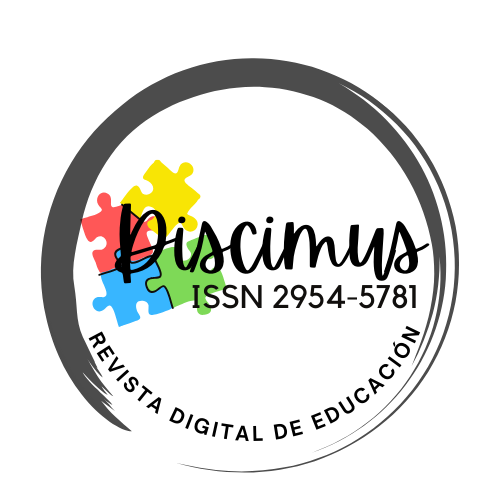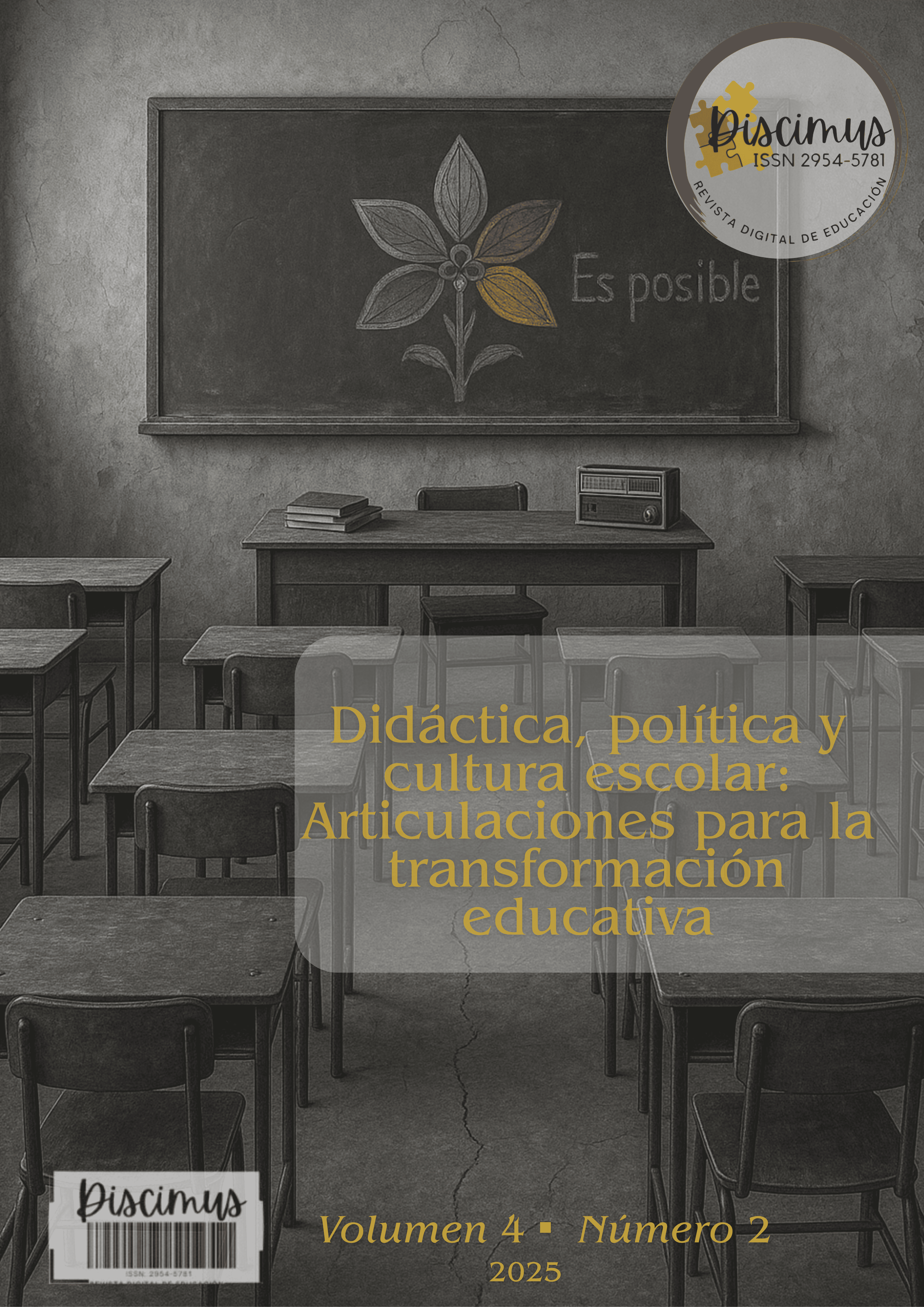Advances in Bilingual Pedagogical Formulas: A View from the Systematic Review
Main Article Content
Abstract
The main objective of this research is to carry out a systematic review focused on the pedagogical formulas for the development of bilingualism of various academic communities at an international level. This systematic review is derived from an ongoing research macro-project entitled "Perceptions around the Implementation of Language Policies for the Development of Bilingualism in Public Institutions of Quindío". The methodology adopted is a systematic review under the PRISMA protocol (Preferred Reporting Items for Systematic Reviews and Meta-Analyses) with an analytical approach. The information was filtered from different databases through the protocol to finally obtain the inclusion of articles and research in the analysis process. For the systematic review, specific inclusion and exclusion criteria, search strategies, and relationships between them were applied. The conclusions of the review highlight eleven bilingual pedagogical formulas on the rise: foreign language immersion (FL), partial immersion, conventional chair, total immersion, dual immersion, CLIL (content and language integrated learning), transitional bilingualism, alternate bilingualism, traditional L2, sustainable multilingualism, and accelerated language teaching. Together, these approaches highlight characteristics that drive the development of bilingualism in diverse academic communities through strategies applied at both the national and local levels.
Downloads
Article Details
Section

This work is licensed under a Creative Commons Attribution-NonCommercial-ShareAlike 4.0 International License.
Open Access Policy at Discimus Journal
Discimus Journal is committed to the promotion of free circulation of scientific and academic knowledge, simultaneously ensuring appropriate acknowledgment for our authors while adhering to the ethical principles of scientific publishing. In alignment with this goal, Discimus publishes all its articles under the ATTRIBUTION-NONCOMMERCIAL-SHAREALIKE 4.0 INTERNATIONAL CC BY-NC-SA 4.0
How to Cite
References
Alvarado, M. (2016). Contextos, metodologías y duplas pedagógicas en el Programa de Educación Intercultural Bilingüe en Chile: una evaluación crítica del estado del debate. Pensamiento Educativo, 53(1).
ARIEZA, R., CISNEROS, M., & TABARES, L. (2012). Sociolingüística: enfoques pragmáticos y variacioncita.
Baker, C. (2011). Foundations of bilingual education and bilingualism. Multilingual matters.
Baker, K. (2006). El concepto de cultura política en la reciente historiografía sobre la Revolución Francesa. Ayer, 89-110.
Batz, M. A. (2011). La Educación Bilingue: Propuesta de un Programa de Inmersión Dual (Doctoral dissertation).
Beardsmore, H. (2003). Who is afraid of bilingualism?. MULTILINGUAL MATTERS, 10-27.
Collins, J., Lee, M., Harwood, S., Mendenhall, R., & Huntt, M. (2020). “If you aren’t White, Asian or Indian, you aren’t an engineer”: racial microaggressions in STEM education. International Journal of STEM Education, 7, 1-16.
Coyle, D., Hood, P., & Marsh, D. (2010). CLIL.
Cummins, J. (1981). Four misconceptions about language proficiency in bilingual education. Nabe Journal, 5(3), 31-45.
Cummins, J. (2001). Bilingual children’s mother tongue: Why is it important for education.
Díaz, C., & Requejo, M. (2009). Bilingual Teaching Attitudes. New Trends in English Teacher Education, 191.
Gámez, Y., & Simón, Y. (2021). Las fórmulas rutinarias en la enseñanza del español como lengua extranjera para principiantes: alternativa didáctica en contexto de inmersión. Decires, 22(26), 73-96.
García, O. (2009). Education, multilingualism and translanguaging in the 21st century. Social justice through multilingual education, 143, 158.
García, O., & Sánchez, M. (2018). Transformando la educación de bilingües emergentes en el estado de Nueva York.
Genesee, F. (1989). Early bilingual development: One language or two?. Journal of child language, 16(1), 161-179.
Guerrero, A. (2019). Fórmula pedagógica de desarrollo bilingüe y producción escrita narrativa (cuento) en español (L1) y en inglés (L2) en estudiantes de quinto grado de primaria de dos instituciones educativas públicas. Revolución en la Formación y la Capacitación para el Siglo XXI, 243.
Grosjean, F., de Mello, H., & Rees, D. (2008). Bilingüismo individual. Revista UFG, 10(5).
Idarraga, J., & Rayo Suárez, N. (2021). Conceptions and Perceptions of English teachers from Buga and Tuluá towards Colombian Bilingualism policies.
Ivanoff, S., & Loncón, D. (2016). Cátedra libre de pueblos originarios. Universidad Nacional de la Patagonia San Juan Bosco: experiencias, interpelaciones y desafíos. Revista del Instituto de Investigaciones en Educación, (8), 23-32.
Johnson, R., & Swain, M. (Eds.). (1997). Immersion education. Cambridge University Press.
Krashen, S. (1985). The input hypothesis: Issues and implications. Laredo, Beverly Hills/Longman.
Lambert, W., & Tucker, G. (1972). Bilingual education of children: The St. Lambert experiment.
Lindholm, K. (2001). Dual language education (Vol. 28). Multilingual Matters.
Lopez, M. (2017). The teaching of Spanish to heritage speakers in partial and total immersion: effective factors of learning in heterogeneous classrooms. TEJUELO-DIDACTICA DE LA LENGUA Y LA LITERATURA, 26, 113-142.
Mehisto, P., Marsh, D., & Frigols, M. (2008). Uncovering CLIL: Content and language integrated learning in bilingual and multilingual education. Oxford: Macmillan Education, 2008.
Mohanty, A. (2009). Multilingual education: A bridge too far. Social justice through multilingual education, 7, 3-16.
Pastor, M. (2024). Análisis del discurso en el aula AICLE: Estrategias lingüísticas y pedagógicas empleadas. NABE Journal of Research and Practice, 1-12.
Sierra, J. (1991). La inmersión y la enseñanza bilingüe en el País Vasco. Culture and Education, 3(10), 47-56.
Skutnabb-Kangas, T. (2000). Linguistic human rights and teachers of English. Bilingual education and bilingualism, 22-44.
Swain, M., & Lapkin, S. (1982). Evaluating Bilingual Education: A Canadian Case Study. Multilingual Matters 2. Multilingual Matters Ltd. Bank House, 8A Hill Road, Clevedon, Avon ES21 7HH, England (paperback, ISBN-0-905028-09-0, 3.90 pounds; hardback, ISBN-0-905028-10-4, 8.90 pounds).
Urrútia, G., y Bonfill, X. (2010). Declaración PRISMA: una propuesta para mejorar la publicación de revisiones sistemáticas y metaanálisis. Medicina clínica, 135(11), 507-511.
Villalba, N. (2017). ESTILOS DE APRENDIZAJE, ORGANIZACIÓN COGNITIVA Y COMPETENCIA ARGUMENTATIVA ESCRITA BILINGÜE EN ESTUDIANTES DE LICENCIATURA EN LENGUAS MODERNAS DE UNA UNIVERSIDAD PÚBLICA COLOMBIANA20. Título original DIVERSIDAD, INNOVACIÓN, LENGUA Y CULTURA, 173.

